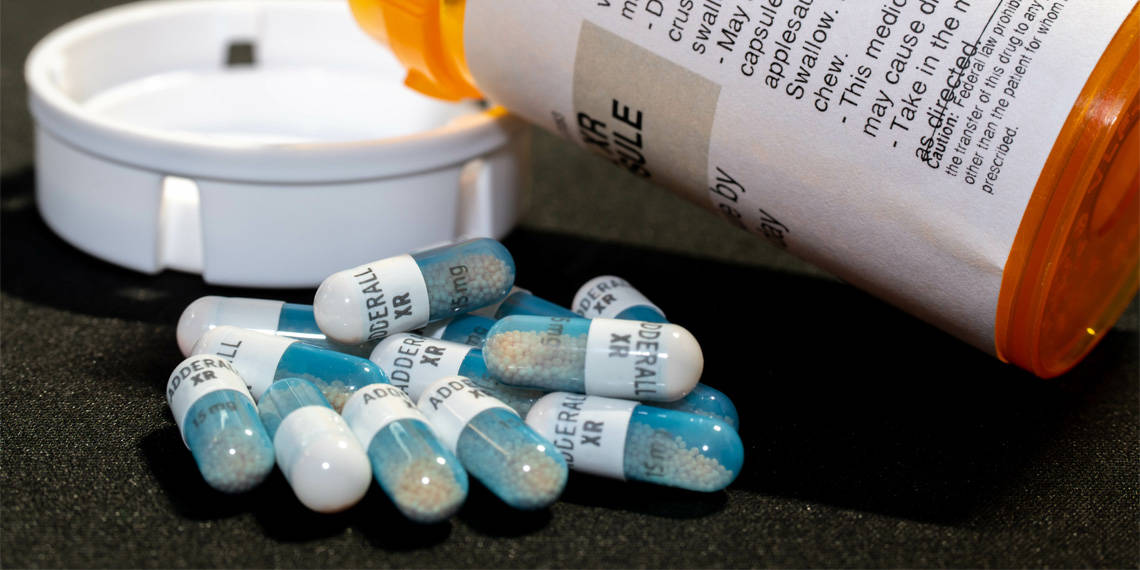The widespread shortages of Adderall that originated around fall 2022 have sparked a renewed interest in the challenged medication, which is utilized for addressing attention-deficit/hyperactivity disorder and narcolepsy.
Adderall has been a commonly prescribed drug for ADHD in the past two decades, but has quickly become the subject of scrutiny due to overprescription and misuse. In some instances, individuals without a proper ADHD diagnosis have started using the medication for its believed cognitive-enhancing properties, leading to a surge in abuse rates and addiction.
In addition to contributing to the stigmatization of as a substance of abuse, Adderall misuse can result in adverse physical side effects, including heart issues, sleep disturbances and dependence.
As a neuroscientist specializing in studying the dopamine system in both the brain and peripheral immune system, my work centers around the short- and long-term impacts of psychostimulant drugs like methamphetamine on a protein that transports dopamine, a chemical messenger that is not properly regulated in people with ADHD.
I strive to gain deeper insights into the intricate interplay between drug use and the dopamine system, which could potentially lead to new treatments for addiction and associated disorders. Unfortunately, the stigma and unfounded narratives surrounding Adderall have made it more challenging for patients in need of this medication to obtain it.
How Adderall Treats ADHD
Adderall is the trade name of a blend of different types of amphetamines, which are stimulants that elevate dopamine levels in the brain to address deficits in those with ADHD.
The underlying processes responsible for ADHD are still not well understood. The primary symptoms include hyperactivity, inattention, mood swings, impulsivity, and disorganization.
Several studies suggest that these symptoms may be caused by the improper regulation of dopamine levels in the brain.
Neurons contain a protein called dopamine transporter, functioning similar to a vacuum cleaner that draws the chemical into the neuron. However, those with ADHD have a leaky dopamine transporter, causing dopamine to be pushed out of the neuron into the synapse – the space between neurons where chemical messages are passed back and forth.
Adderall is believed to function by blocking this leaky protein, preventing dopamine from spilling out of the neuron through the dopamine transporter. This is thought to stabilize dopamine levels in the ADHD patients’ brain, thereby alleviating their debilitating symptoms.
The Paradoxical Effects of Adderall
Individuals without ADHD typically possess a functioning dopamine transporter that can maintain balanced chemical levels inside and outside the neuron. However, when they use amphetamines like Adderall, the drug can interfere with the transporter’s ability to remove dopamine from the synapse and cause it to push dopamine out of the neuron, leading to excessive dopamine in the synapse, resulting in feelings of euphoria and heightened wakefulness.
Although these effects might seem beneficial, misusing Adderall can be problematic as it may lead to cardiovascular problems. Current evidence indicates that Adderall does not significantly raise the risk of cardiovascular disease for individuals with ADHD. However, individuals without ADHD who misuse Adderall can develop drug dependence and consume it in dangerous amounts.
Moreover, Adderall misuse not only perpetuates its use due to its rewarding effects but also reinforces dependence by causing negative emotional states known as the “dark side” of addiction. Overactivation of the brain’s reward system disrupts its normal function, leading to a decrease in sensitivity to reward signals. It also triggers sustained activation of the brain’s stress systems, resulting in feelings of anxiety and restlessness in the absence of the drug.
Adderall Works When You Need It
Other drugs like methylphenidate, known as Ritalin, also treat ADHD by targeting the dopamine transporter.
While Adderall and Ritalin alleviate the hyperactive, impulsive, and inattentive symptoms in ADHD patients by stabilizing dopamine levels, they do so using different mechanisms. Ritalin reduces the dopamine transporter’s leakiness by directly blocking entry. Adderall also reduces leakiness but by competing with dopamine for entry into the transporter.
In individuals without ADHD, both Ritalin and Adderall significantly enhance brain dopamine levels and induce euphoria, hyperactivity, and other symptoms. However, both drugs are equally beneficial to patients with ADHD.
To address anxiety, depression, narcolepsy, and other neuropsychiatric conditions, millions of patients globally use medications that target dopamine transportation and other neurotransmitters such as norepinephrine and serotonin, yet their use does not carry the same stigma as recreational misuse.
Due to the euphoria-causing properties and hyperactivity that Adderall can induce in those without a need for the drug, its misuse and abuse have unfortunately perpetuated false narratives about the medication for those who do need it. However, for ADHD patients, it can alleviate adverse symptoms and significantly boost their quality of life.
This article is republished from The Conversation under a Creative Commons license. Read the original article.


